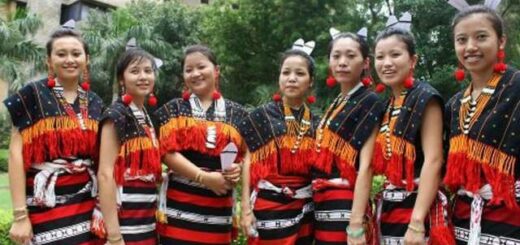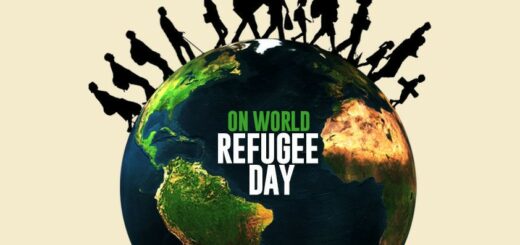National Current Affairs – UPSC/IAS Exams- 10th September 2019
Hydrogels with Tunable Bactericidal Activities
Topic: Science and Technology
In News: A hydrogel which can be tuned to change the anti-bacterial activity was fabricated by Indian Association for the Cultivation of Science (IACS), Kolkata.
More on the Topic:
- The hydrogel was made by using a naturally occurring nucleoside molecule cytidine to self-assemble into a hydrogel in the presence of silver acetate and phenyl boronic acid.
- The hydrogel possessing i-motif DNA-like structure was found to exhibit antibacterial activity against Gram-negative bacterial strains such as E. coli, Pseudomonas aeruginosa, Klebsiella pneumoniae, and multidrug-resistant Morganella morganii.
- While silver is known to have antibacterial property, it may not be used due to its toxicity. But when silver acetate was incorporated in the hydrogel the toxicity was reduced and thus suitable for treating bacterial infections.
- The hydrogel containing silver acetate was found to be non-toxic to normal kidney epithelial cells and red blood cells.
- By changing the Boronic Acid component in Hydrogel, a large number of hydrogels with different bacteria-killing properties can be created.
Uses of Hydrogel:
- It can be used for drug delivery
- Intrinsic antibacterial activities.
- Cancer drug chemotherapy
Source: The Hindu
National Genomic Grid
Topic: Science and Technology
In News: In a move to take cancer research to the next level and make treatment viable for people of different economic classes, the government has plans to set up a National Genomic Grid, which will study genomic data of cancer patients from India.
More on the Topic:
- The grid to be formed will be in line with the National Cancer Tissue Biobank (NCTB) set up at the Indian Indian Institute of Technology, Madras and will collect samples from cancer patients to study genomic factors influencing cancer and identifying the right treatment modalities for the Indian population.
- The NCTB is functioning in close association with the Indian Council for Medical Research (ICMR).
- The genomic samples will help researches to have India-specific studies on cancers. The government plans to set up the National Genomic Grid in the same style with pan-India collection centres by bringing all cancer treatment institutions on board.
- This research is carried out through the technique of Genome Sequencing.
About Genome and Genome Sequencing:
- Genome: It is an organism’s complete set of DNA, including all of its genes.
- Each genome contains all of the information needed to build and maintain that organism. In humans, a copy of the entire genome more than 3 billion DNA base pairs is contained in all cells that have a nucleus.
- Genome sequencing: It is figuring out the order of DNA nucleotides, or bases, in a genome—the order of As, Cs, Gs, and Ts that make up an organism’s DNA. The human genome is made up of over 3 billion of these genetic letters.
- Scientists will translate those strings of letters into an understanding of how the genome works.
Source: The Hindu
Nilgiri Tahr
Topic: Environment and Ecology
In News: The population of Niliri Tahr has increased from 568 in 2018 to 612 in 2019 in the Mukurthi National Park, Tamil Nadu.
More on the Topic:
- Nilgiri Tahr is also known as Nilgiri Ibex.
- It has been listed as “Endangered” by IUCN.
- It has been listed under Schedule 1 of the Wildlife (Protection) Act, 1972 which provides absolute protection and offences under these are prescribed the highest penalties
- The Adult males of Nilgiri Tahr species develop a light grey area or “saddle” on their backs and are hence called “Saddlebacks”
- It is the state animal of Tamil Nadu.
- It is found in open montane grassland habitat of rain forests ecoregion.
- It is endemic to the Nilgiri Hills and the southern portion of the Western Ghats in Tamil Nadu and Kerala.
Source: The Hindu
Krishna Water dispute
Topic: Geography
In News: Maharashtra and Karnataka Chief Ministers jointly oppose Andhra Pradesh’s application which seeks to relook at the Krishna Water Disputes Tribunal’s 2010 order on water distribution between the riparian states.
More on the Topic:
- A dispute over the sharing of Krishna waters has been ongoing for many decades.
- In 1969, the ‘Krishna Water Disputes Tribunal’ (KWDT) was set up under the Inter-State River Water Dispute Act, 1956.
- It presented its report in 1973, which was published in 1976.It divided the 2060 TMC of Krishna water at 75% dependability into 3 parts.
- The second KWDT was instituted in 2004. It delivered its report in 2010.
- It made allocations of the Krishna water at 65% dependability and for surplus flows.
- Soon after the 2010 report, Andhra Pradesh challenged it through a Special Leave Petition before the Supreme Court.
- In an order, the apex court stopped the Centre from publishing it in the official Gazette.
- In 2013, the KWDT issued a ‘further report’, which was again challenged by Andhra Pradesh in the Supreme Court.
- After the creation of Telangana in 2014, the Water Resources Ministry has been extending the duration of the KWDT.
- Andhra Pradesh has since asked that Telangana be included as a separate party at the KWDT.
- The allocation of Krishna waters be reworked among four states, instead of three. Maharashtra and Karnataka are now resisting this move.
- According to these 2 states, Telangana was created following bifurcation of Andhra Pradesh. Therefore, allocation of water should be from Andhra Pradesh’s share which was approved by the tribunal.
About Krishna River:
- The Krishna is an east-flowing river that originates at Mahabaleshwar in Maharashtra.
- It flowing through Maharashtra, Karnataka, Telangana and Andhra Pradesh before entering into the Bay of Bengal.
- Tributaries of Krishna: Major Tributaries of Krishna River are as follows: Left: Bhima, Dindi, Peddavagu, Halia, Musi, Paleru, Munneru. Right: Venna, Koyna, Panchganga, Dudhganga, Ghataprabha, Malaprabha, Tungabhadra
Source: The Hindu
Coverage in India
Topic: Health
In News: According to a national survey to measure Iodized Salt the coverage of iodized salt, Tamil Nadu had the lowest consumption of iodized salt.
More on the Topic:
- The survey was conducted by Nutrition International (a not for profit agency based in Canada) in collaboration with the All India Institute of Medical Sciences (AIIMS) and the Indian Coalition for the Control of Iodine Deficiency Disorders (ICCIDD).
- It was first of its kind, pan India survey that tested the iodine content in samples of cooking salt from households.
- The survey covered a total of 21,406 households across India.
- The study shows that 3% of Indian households consumed adequately iodized salt, (which is salt with at least 15 parts per million of iodine).
- The five worst performers were Tamil Nadu (61.9%), Andhra Pradesh (63.9%), Rajasthan (65.5%), Odisha (65.8%) and Jharkhand (68.8%).
- The North-Eastern states were doing well with respect to the consumption of iodized salt as compared to the rest of India.
- The key recommendation of the study was to sustain the momentum so that iodine coverage does not fall below current levels.
- It also recommended that the States and the Centre need to work together to address the current gaps and look into issues that vary from one state to another, in order to produce adequately iodized salt.
Why Iodine is important:
- Iodine is a vital micro-nutrient for the optimal mental and physical development of human beings.
- Deficiency of iodine can result in a range of disabilities and disorders such as goitre, hypothyroidism, cretinism, abortion, still-births, mental retardation, and psychomotor defects (defects in which there is a slow down in thought process and a reduction of physical movements in an individual).
Government Initiatives:
- In 1992, India made fortification of salt with iodine mandatory, for direct human consumption.
- In 2011, the Supreme Court also mandated universal iodization for the control of iodine deficiencies.
- Jeevan Bindi intiative (an iodine patch designed like a regular bindi) was started to help one lakh tribal women in north-west Maharashtra battle iodine deficiency as these tribals did not consume iodized salt.
Source: The Hindu
Hurricane Dorian
Topic: Geography
In News: India on Sunday announced disaster relief aid of $1 million to help people in the Bahamas affected by Hurricane Dorian.
More on the Topic:
- According to reports, the death toll from the calamity has risen to over 40 and is likely to increase even more, even as search and rescue teams are still trying to reach out to Bahamian communities isolated by floodwaters and debris in the wake of Hurricane Dorian.
- Hurricane Dorian was an extremely powerful, long-lived, and destructive tropical cyclone that devastated the northwestern Bahamas and caused significant damage to the Southeastern United States and Atlantic Canada.
- The hurricane caused catastrophic damage to Grand Bahama and Abaco Islands, with at least 70,000 people left homeless.
About Cyclones:
- Tropical cyclones are regarded as one of the most devastating natural calamities in the world.
- They originate and intensify over warm tropical oceans.
- These are ferocious storms that originate over oceans in tropical areas and move over to the coastal areas causing violent winds, very heavy rainfall, and storm outpourings.
Formation of Cyclones:
- The energy that strengthens the storm comes from the condensation process in the towering cumulonimbus clouds, surrounding the centre of the storm.
- With an uninterrupted supply of moisture from the sea, the storm is again strengthened.
- On reaching the terrestrial region the moisture supply is cut off and the storm dissipates. The place where a tropical cyclone cuts the coast is called the landfall of the cyclone.
- A landfall is frequently accompanied by sturdy winds, heavy rain and mounting sea waves that could threaten people and cause damage to properties.
- Cyclones which cross 20 degrees North latitude are more destructive.
- They cover a larger area and can originate over the land and sea whereas the tropical cyclones originate only over the seas and on reaching the land they dissipate.
Source: The Hindu













